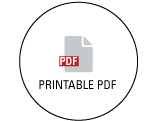R. Jariwalla, M.W. Roomi, B. Gangapurkar, T. Kalinovsky, A. Niedzwiecki, M. Rath
Biofactors 2007, 31(1): 1-15
Abstract:
Influenza, one of the oldest and most common infections, poses a serious health problem causing significant morbidity and mortality, and imposing substantial economic costs. The efficacy of current drugs is limited and improved therapies are needed. A unique nutrient mixture (NM), containing ascorbic acid, green tea extract, lysine, proline, N-acetyl cysteine, selenium among other micronutrients, has been shown to exert anti-carcinogenic and anti-atherogenic activity both in vitro and in vivo. Many of the constituents of NM have been shown to have an inhibitory effect on replication of influenza virus and HIV.
This prompted us to study the effect of NM on influenza A virus multiplication in infected cells and neuraminidase activity (NA) in virus particles. Addition of NM to Vero or MDCK cells post infection resulted in dose-dependent inhibition of viral nucleoprotein (NP) production in infected cells. NM-mediated inhibition of viral NP was selective and not due to cytotoxicity towards host cells. This antiviral effect was enhanced by pretreatment of virus with the nutrient mixture. Individual components of NM, namely ascorbic acid and green tea extract, also blocked viral NP production, conferring enhanced inhibition when tested in combination. Incubation of cell-free virus with NM resulted in dose-dependent inhibition of associated NA enzyme activity. In conclusion, the nutrient mixture exerts an antiviral effect against influenza A virus by lowering viral protein production in infected cells and diminishing viral enzymatic activity in cell-free particles.
Key Words:
Influenza virus, nutrients, selective antiviral effect, NP viral antigen, neuraminidase activity
Full Study:
